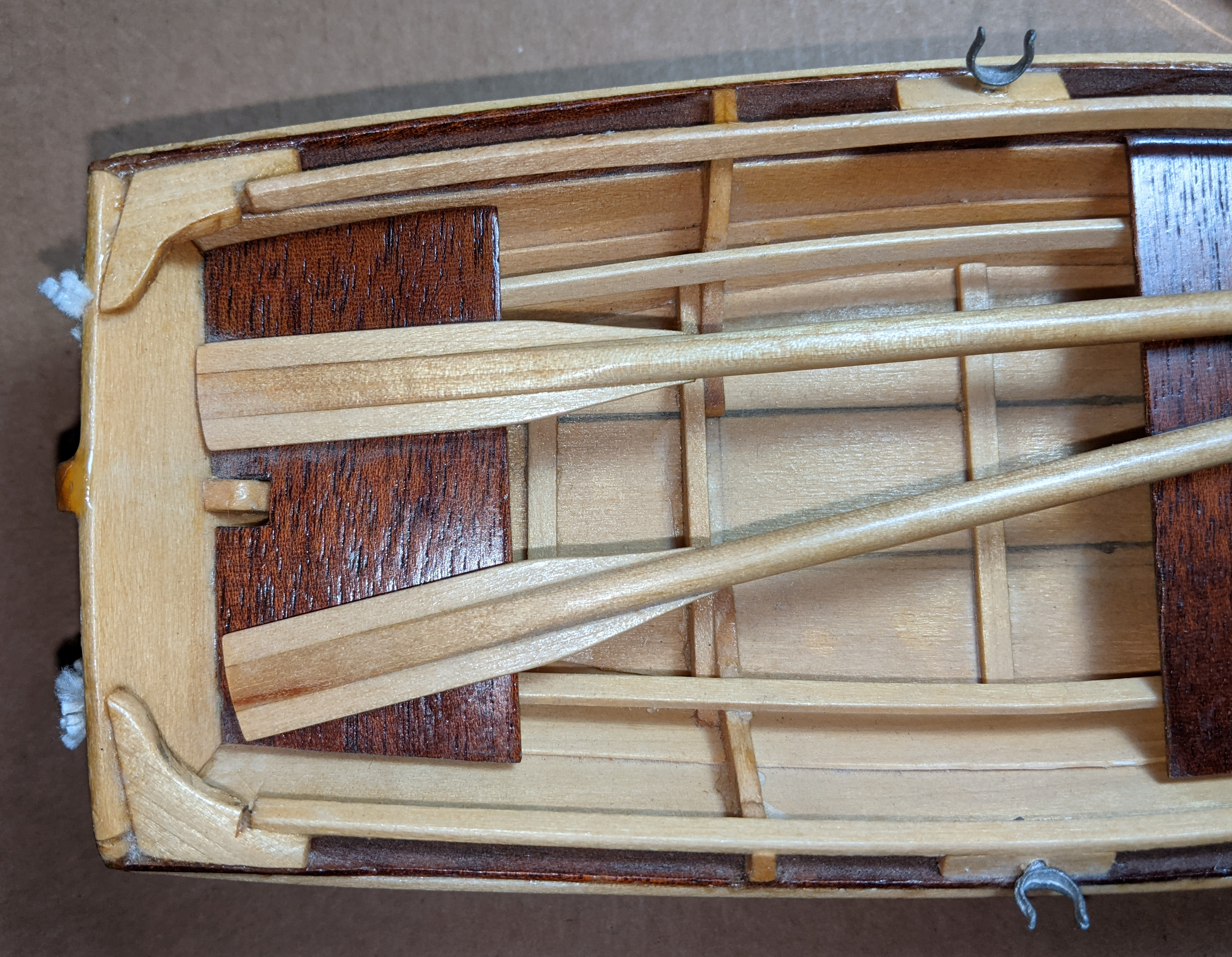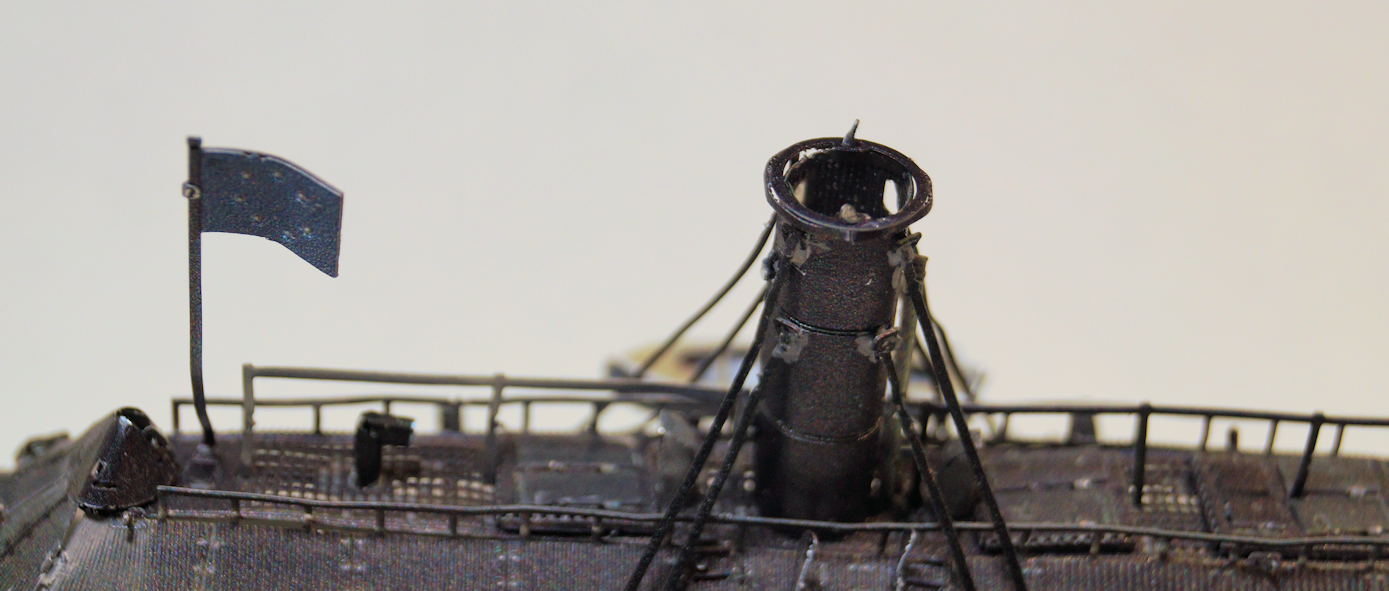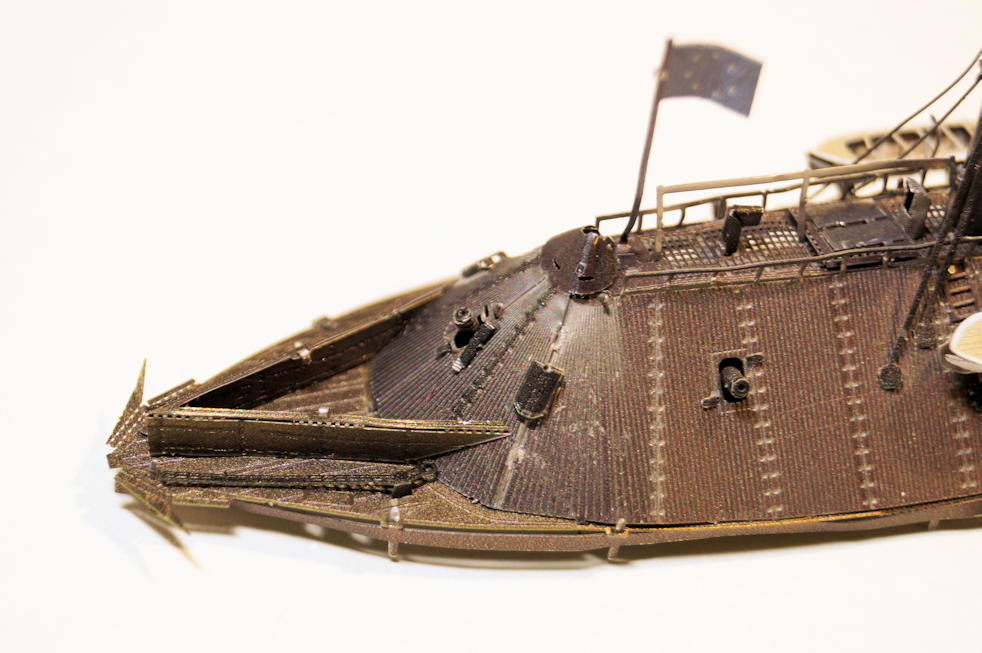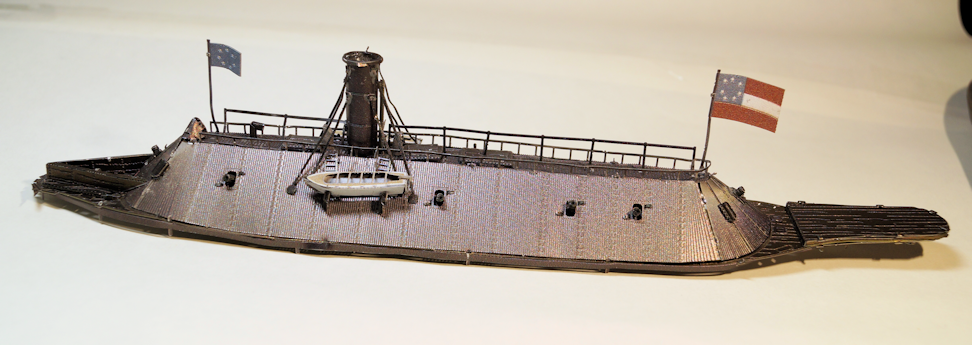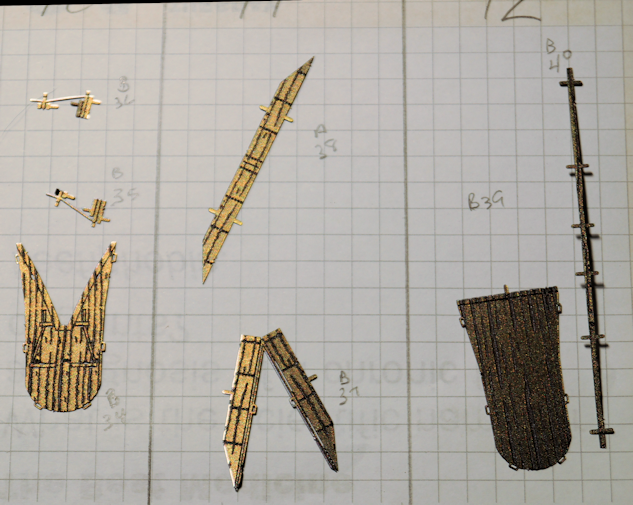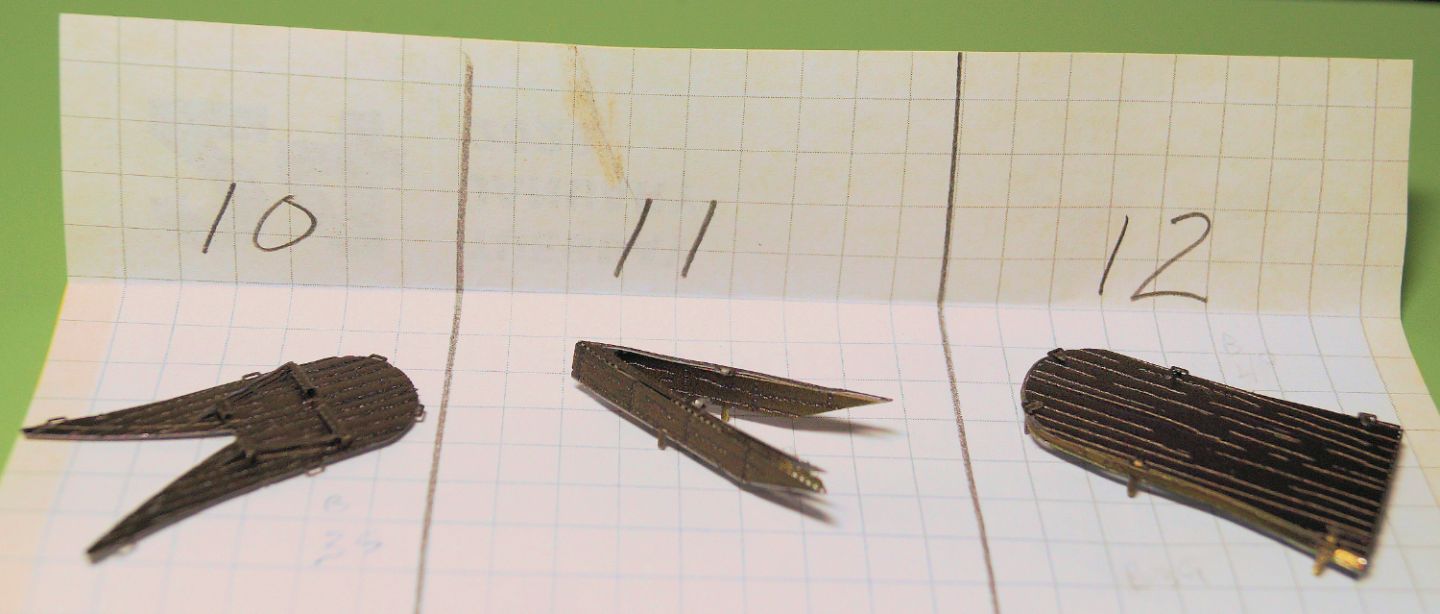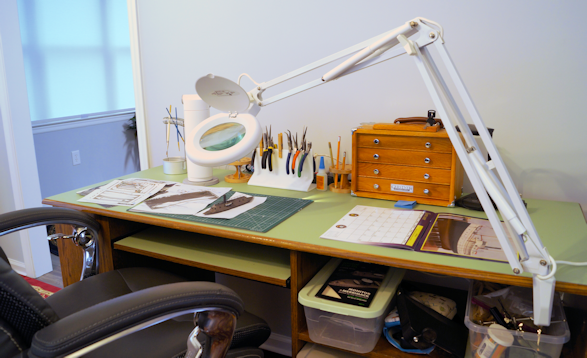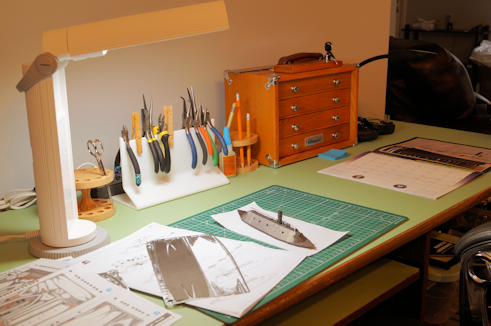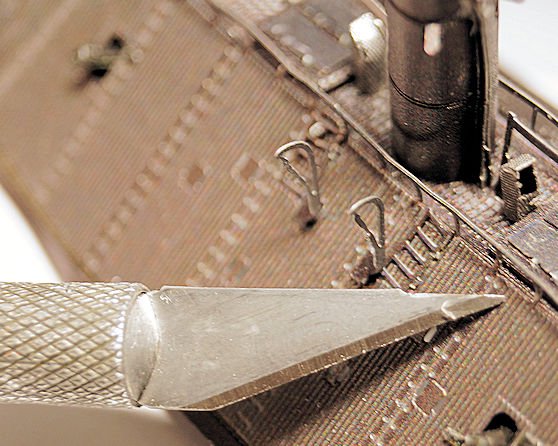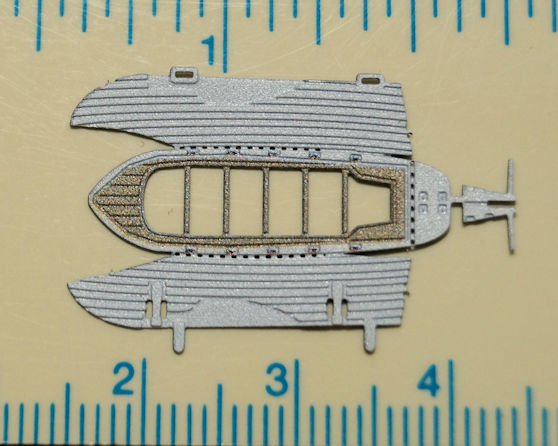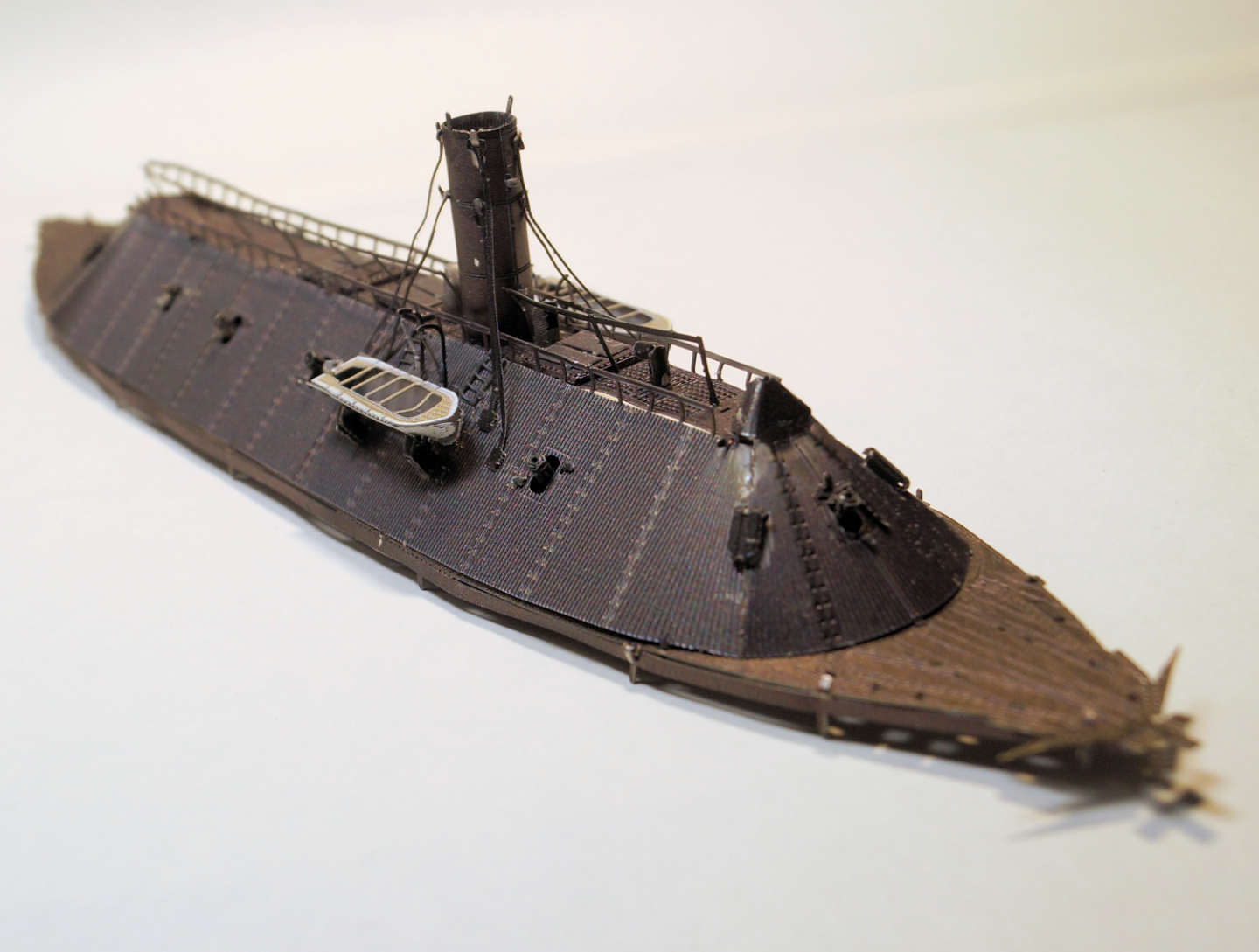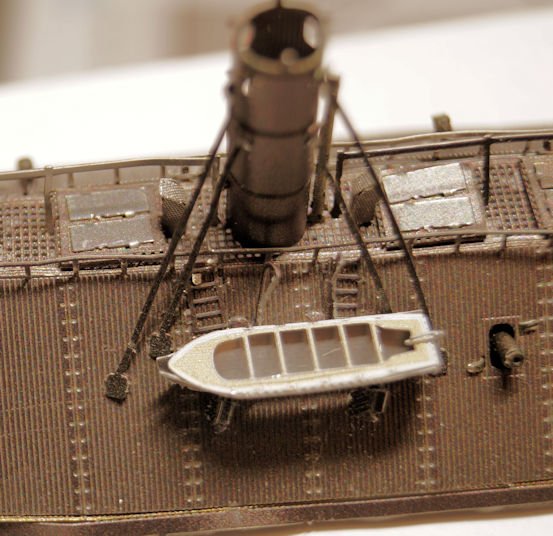-
Posts
907 -
Joined
-
Last visited
Content Type
Profiles
Forums
Gallery
Events
Everything posted by robert952
-
Welcome aboard. Looking forward to seeing some of your work.
-
Thanks @Mjohn I am glad to share the experience. It's a good way to show the details of the model and point out the process. While not a typical medium (metal), I hope it provides information of some use to people.
-

Your wooden kit progression - go big, or keep learning/practicing?
robert952 replied to Esap's topic in Wood ship model kits
I don't have a lot to add to what others have said. Start small and have an attitude towards learning. I made the noob error of starting out on a big project and got overwhelmed. But I did not get discouraged. I realized I had a lot to learn. Then I started reading build logs and other threads, magazine, books and attending workshops. (I have what I think is a pretty decent reference library, too.) One piece of advise: don't be overcritical of your own work. My family looks at my models and think them very nicely done. But they have even less experience and exposure to the hobby than I have. However, I can look at an older build. At the time I finished the model, I was pleased with the effort. Today, several years later, I am still pleased with what I accomplished. (It was the Dinghy by Midwest Models.) However, I am also proud that I can look at the model and see areas that "aren't quite right" and things "I can do better next time." I use a critical eye without being overcritical. I think that shows the gain in knowledge over the years. I just have to practice and improve the skills. One other piece of advise: while moving to bigger and more complex models is an admirable goal, don't overlook the potential of other small projects. Bigger may not always be better. I have seen those I consider super model builders do some great things with smaller projects by using advanced techniques. You don't need to scratch build a complete model. You can learn and explore some of those aspects of advanced model making by 'kit bashing.' Improve on the components in the kit to make it more historically accurate or change the aesthetics. Explore 'third party' add-ons and material. Some examples I have seen are use of different rigging blocks, applying a different approach to making sails, and making components closer to proper scale. They also provide a reasonably priced way to learn over buying a 'the great big boat' model. (I'd have to see if I could find it again. But I was fascinated over the approach a modeler took building a detailed lobster pot. Even something like that teaches new ways to approach a model and provide learning opportunities.) It all goes back to the idea several expressed here that we have to be willing to learn as we evolve. Just keep in mind... you should enjoy the journey. -
Nice finished build. Very well done. I look forward to Part 2 of the series (The Sailing Pram). I got these three as Christmas present. I find the various build logs very helpful to give me a preview of the processes involved.
- 6 replies
-
- Grand Banks Dory
- Model Shipways
-
(and 1 more)
Tagged with:
-
Step 13 covering installation of sub-assemblies from Step 10,11 and 12: smokestack cap, flags, and a couple of other details. Again going in the sequence shown on the assembly manual, a few pieces get installed to begin this step. The list starts with a ring cap on the smokestack followed by the flags. I am finding it nearly impossible to handle the model without bending the flag staffs. On the good side, looking ahead, the upper part gets completed in step 14 The next part of the process was what will (I believe) be the base for a couple of bittes on the stern between the bulkhead and deck extension. After installing the aft flag, the rail is wrapped (or in my case warped) around. That piece has taken a beating. The aft deck from previous assembling process goes on next. Took a bit of finesse to get them in place. Here's a look at the underside of the aft deck assemblies. The bow ram assembly was next. Surprisingly, I must have gotten lucky with the V-bend of those pieces. They neatly dropped into place. The lats pieces were the anchor chains. That action finishes the procedure in Step 13. And here is what the vessel looks like at the end of Step 13. Step 14 adds the aforementioned bittes (6 of them). And Step 15 begins the hull assembly process. (I bet you've never seen a ship built from the top down.) 🤔 I'll likely put those two steps together in the next post.
-
I have a room I haven't vacuumed for 2 years because I know there's some small parts hidden in shag. An unusual model. Looking good!
- 68 replies
-
- Morel
- Master Korabel
-
(and 1 more)
Tagged with:
-
Thanks. I am just getting over a head cold and cough. A coughing fit doesn't help either.
-
Jumping on board to watch this build. Looking good. I enjoy and learn from how people solve the challenges they come across.
- 48 replies
-
- Bowdoin
- BlueJacket Shipcrafters
-
(and 1 more)
Tagged with:
-
Steps 10 (aft deck lower piece); Step 11 (bow ram); Step 12 (aft deck upper piece) Overall, the steps do not take an inordinate amount of time. But, it's a hobby. What else do I have planned? The assembly of these three sub-assemblies took a bit over an hour. The time consuming part is taking care not to over-bend the pieces and yet bend them enough to "put Tab A into Slot B." Here's the pieces involved for these three steps. (left to right). They have been cut from the sprue. The grid is 1/4 inch to help with the sense of the size of the pieces. Interestingly, they show the assembly of done upside down. It's more of "however, I could hold it and get the tiny pieces to fit into the deck slots." In Step13, assembly 10 is installed with the etched side down. Step 12 piece will be installed etch side up over Step 10 assembly. Spoiler alert: These pieces will extend over the propeller assembly later on. The finished pieces look like this. Step 10 is shown etched side up to show the detail that will nearly be hidden in the next step. Ready for Step 13...stay tuned.
-
No problems, Bob. It's all just part of the conversation. Glad you pointed this thread to Glenn. The more the merrier. Thanks for stopping by and for your comments, Glen. For what you get, the Metal Earth models are reasonably priced (IMO). I have a few others from ME in my stash. No ships (at least I don't think so) though I did do their Golden Hinde a while back.
-
Step 08 and Step 09 mounting the ship's boats and smoke stack support/braces. Real life, as usual, has a way of interrupting a build. In this case, I found it too hard to bend over the low table I had been using as a temporary solution. So, I stopped work on the model. There were also a couple of 'road trips' to visit parents and brother. Then after renovations work was done, we had to put final touches on living area (rugs, blinds, unpacked kitchen ware, etc.). That took longer than I thought it would. We are still looking for some items we know we packed back in September, 2022. My favorite tea mug among them. Also, I reworked an older computer desk to make a workbench to assemble models. I had to promise the Admiral I'd keep it neat since it sits just off the living room. So, far so good. (I even bought some odorless thinner for later work.) It's not an official part of the build. However, I am pleased with my efforts on the workbench. So, here's a couple of pics of my finished workspace. I put VYCO (vinyl material used on drafting tables) on the top, and had to repair one end of the desk that had holes I drilled for computer cables. The keyboard tray makes a great lower work area and photography stage. The pull out printer tray is a convenient storage area using boxes to organize stuff. Picking up at Step 08, this step assembles the ship's boats and supports for the stacks on the port side. The davit pieces attached to the ship. The "Exacto" knife gives a sense of scale for these pieces. The boats are folded and the support pieces mounted to the boats. Again, at this scale, objects and assemblies are quite small. Here's the boat as cut from the sprue. After mounting the boats, support pieces for the smoke stack are installed. This completes the port side portion of the assembly steps. Since this photo was taken I tightened the bend on the bow of the boat. Step 09 repeats the process for the starboard side. As before, I used some PCV to secure the parts in place on the underside. Also, as I was handling the model, the support pieces got bent. Once I am finished handling the model, I will see what I can to to straighten and flatten them. Here's a shot with both boats and all stack supports in place. For the next part of the build log, I'll put Steps 10, 11 and 12 together as they are small sub-assemblies for the fore and aft decks. I should be able to do those in next day or two.
-
Nice looking stem post. The challenge of solving problems like these make for great learning experiences. I like how you used rubber bands. I'll be challenged to keep the pressure equal when I get around to building this. The big advantage at this site are the builds. Sometimes you have to dig around to find specific models. Sometimes you can find a similar problem on a different build, though that takes a bit of digging.
- 40 replies
-
- Lowell Grand Banks Dory
- Model Shipways
-
(and 1 more)
Tagged with:
-
@Roger Pellett @Bob Cleek @DaveBaxt Thanks for the replies. I appreciate the input. As I implied, I thought I read it somewhere. I have two or three sources to go back through in my library to see if I can find this info. For some reason it seemed in the context of lighthouse tenders and fishing boats that operated close to rocky shores. But, memory fails me on the details. I looked in the area I had been perusing in Chappelle's American Small Sailing Craft. No joy there. I'll probably come across it when I reread some other article or thread. Thanks again for the input.
-
Greetings from near the Research Triangle area of NC!
-
Great collection of information. Thanks to all who added to the thread. (Hit submit too soon.) Was copper applied to rudders (particularly the bottom edges) on small boats to protect them some from rocky bottoms? It would make sense. I may be dreaming that I read something on this use of copper on rudders. However, I may be misremembering. The foil and painting tricks here may be useful to know.
-
Thanks for sharing this info. It gives a new respect for sailing tall ships.
-
Since you mentioned "antiquarian and vintage" material, I share these details to add to Chris' comments. According to the article at this link on Publicdomainreview.org: Newly entering the public domain in 2023 will be: works by people who died in 1952, for countries with a copyright term of “life plus 70 years” (e.g. UK, Russia, most of EU and South America); works by people who died in 1972, for countries with a term of “life plus 50 years” (e.g. New Zealand, and most of Africa and Asia); films and books (incl. artworks featured) published in 1927 for the United States.
-
I have this model in my stash but haven't built it yet. I did pull out the instruction manual. I hope I am on the right step (#9) and looking at the area of concern (rolling bevel). If I interpret the concept, the 'rolling bevel' allows the boards at the stem to be more flush than the 'clinker' fit of the rest of the planks. (Like a hybrid, clinker to carvel adapter?) I found an image I think shows this concept: Strakes at stem and stern. Post #3 in this thread by Mark P shows an image of a boat on the Cutty Sark. Notice the planks at the stem are flattened more and have a slight bend outward. I feel like I'm the blind leading the blind since I haven't built this model. Someone else may need to verify my thinking. (That way I can learn, too. ) I've been following the build and already have learned from it. Thanks for sharing your experinece.
- 40 replies
-
- Lowell Grand Banks Dory
- Model Shipways
-
(and 1 more)
Tagged with:
-
Welcome to MSW, Bryan. I will be following this build. You will find a wealth of information on the website. If you have any questions, want advice, or need help on something, do not hesitate to post in your log or as a separate question in one of the other sub-forums. I looked at your pictures. You're off to a good start. I look forward to watching your progress. You might want to consider putting the pictures within the build log. For me, I sometimes lose track of what I have seen and not seen when the pics aren't in the log. You just click and drag the image into the box while you type your log. That makes it easy to follow your progress and any thoughts or comments you have as you work the project. There's a couple logs on Grand Banks Dories being built (from Blue Jacket and Model Shipways). I am following a couple of those builds also. I got the Model Shipways version recently and added it to my stash. I looked through the instruction manual and it looks like a nice model. Your build will add to the information on the web site on modeling this boat. Just our of curiosity, is this your first wooden model you've built? Or are you an 'old hand?" Any particular reason for this build? Again, welcome aboard.
-

backing up a log
robert952 replied to Knocklouder's topic in Using the MSW forum - **NO MODELING CONTENT IN THIS SUB-FORUM**
Here's a hack for Word users (and probably other word processors). You might save a step in cut and paste process by highlight what you want on the web page in the browser (include images) and then click and drag into your Word document. Images come in at full size but those can be resized by double clicking the image and dragging a corner to fit the page better. (Be careful and don't grab a top or side handle - this changes the image's proportions.) As another side note, the image you drag in retains its link info to the website. In Word, CTRL + Click to open link to image (or right click image and 'Open Hyperlink). In a saved PDF version, double click the image. This may be useful if you want to go to the 'originally sized' image. If the image is deleted from the website's server, of course, it won't work. Still a tedious process. But maybe a bit of time can be saved instead of using two or three pieces of software and reassembling for PDF. (I also use the above click and drag method with OneNote when I want to plagiarize...I mean...copy stuff for personal use only. The advantage with OneNote is that the URL is captured and added at the bottom of the stuff you highlighted and dragged into OneNote. That allows you to return to the website to review as desired. Not too much help for making a PDF of a build log. But it's a great tool when you research using the web and want to capture stuff 'on the fly.' Just thought I'd mention this in passing for those looking for more software tools.) -
I know it's likely a matter of the angle and position of the camera. However, it's a good thing you put the skylight in so the masts can stand tall. 😉 Looking great and a lot of visual information on how you assembled components.
- 589 replies
-
- le gros ventre
- cargo
-
(and 1 more)
Tagged with:
-

backing up a log
robert952 replied to Knocklouder's topic in Using the MSW forum - **NO MODELING CONTENT IN THIS SUB-FORUM**
I see the issue. As I said I hadn't done too much experimenting and hadn't done multiple web pages yet. But the output was very clean which would be my goal. I can see the pain that would be. Edited note. My apologies. My previous comments were out of line. I reread my post. I am not sure what I was thinking when I wrote them. I did not intend for them to come across as they did. I really do appreciate the effort pit forth to make the task easier.. -

backing up a log
robert952 replied to Knocklouder's topic in Using the MSW forum - **NO MODELING CONTENT IN THIS SUB-FORUM**
I send my thanks and appreciation to those who have done some investigation on a process for the website. I had never thought of this aspect, but I definitely see the value of having a PDF of a build log. If you are only concerned with an archived copy to have on our PC's hard drive, I offer the following. These work by just pasting in a URL and clicking a convert button. I just wanted to post the option if others wanted to investigate free services. I googled 'web page to pdf" and got to this link: Top 6 Online Webpage to PDF Converters Note: the link to the article is hosted by Wonderware. They have a fee based service but it's still fairly high for the very casual user. They do have a one-time $130 version. But they say you may have to pay for 'major updates.' They cover the downside of free services and have a sales pitch at the bottom of the article. They are spot on for the downsides. But if you only do one or two a year, why pay a high fee. I started running some 'tests' and will give more details next week. The admiral is packing our bags for a weekend road trip. So, I won't finish my checks until late Sunday or sometime Monday. (And, before the rest of the Admirals post anything: Yes, I do pack my own stuff.) Two of the top six do produce good results so far: PDF on Fly and PDF Crowd. I couldn't get Web Page to PDF to load. At HiPDF site I did not see a web to PDF button though the article indicates it will do that conversion. I haven't looked at the last two: Web2PDF and FreePDF Maker. I'll look at those when I get back home. Outputs for the ones I tested open well in Adobe Acrobat, Google Chrome and PDF Fusion. The latter is the PDF creator I have used (apparently I updated in 2020) avail from Corel ($55 US). The software has some issues that I have learned to live with since I don't create a lot of PDFs. For some reason, using either of the above converters, PDF Fusion displays some of my capital i's and lower case L's in bold face. A minor issue if I only want an archive copy of my build log. But I can also use other viewers. Chrome and Acrobat display the text as on the web page. I haven't done any hard prints of the outputs, just viewed on screen. The outputs, while PDF, differ in spacing, font size and margins, whether they show the banner or not, have an 'ad' at the bottom, etc. More details later. (I also don't know if they have limits on document length. 678 pages is a lot of pages and I am sure long conversion times. One (PDF on Fly) definitely has a daily limit on number of conversions. I used my own build log that's not a full web page long. So, the process was short time frame with relatively few pages. PDF on Fly - 17 pages tiny font; PDF Crowd - 26 pages using same sized font as web page but has 'ad line' on bottom of each page. PDF Crowd my favorite so far. I can live with the small tag in the footer area of each page for an archive copy considering the price I paid for the conversion. 😁 Hope you found this information useful.
About us
Modelshipworld - Advancing Ship Modeling through Research
SSL Secured
Your security is important for us so this Website is SSL-Secured
NRG Mailing Address
Nautical Research Guild
237 South Lincoln Street
Westmont IL, 60559-1917
Model Ship World ® and the MSW logo are Registered Trademarks, and belong to the Nautical Research Guild (United States Patent and Trademark Office: No. 6,929,264 & No. 6,929,274, registered Dec. 20, 2022)
Helpful Links
About the NRG
If you enjoy building ship models that are historically accurate as well as beautiful, then The Nautical Research Guild (NRG) is just right for you.
The Guild is a non-profit educational organization whose mission is to “Advance Ship Modeling Through Research”. We provide support to our members in their efforts to raise the quality of their model ships.
The Nautical Research Guild has published our world-renowned quarterly magazine, The Nautical Research Journal, since 1955. The pages of the Journal are full of articles by accomplished ship modelers who show you how they create those exquisite details on their models, and by maritime historians who show you the correct details to build. The Journal is available in both print and digital editions. Go to the NRG web site (www.thenrg.org) to download a complimentary digital copy of the Journal. The NRG also publishes plan sets, books and compilations of back issues of the Journal and the former Ships in Scale and Model Ship Builder magazines.

